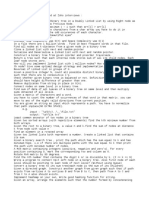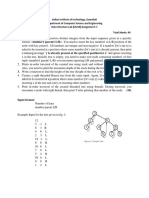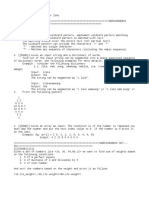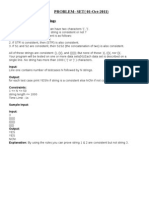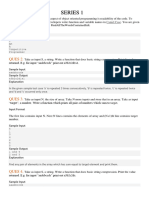0% found this document useful (0 votes)
30 views15 pagesProgram Ms
The document contains ten distinct programming problems, each with specific input and output requirements. Problems range from calculating maximum unprintable flower counts and longest common palindrome subsequences to tree traversal and honey collection strategies. Each problem includes example inputs and outputs to illustrate the expected results.
Uploaded by
bichalanithisha690Copyright
© © All Rights Reserved
We take content rights seriously. If you suspect this is your content, claim it here.
Available Formats
Download as TXT, PDF, TXT or read online on Scribd
0% found this document useful (0 votes)
30 views15 pagesProgram Ms
The document contains ten distinct programming problems, each with specific input and output requirements. Problems range from calculating maximum unprintable flower counts and longest common palindrome subsequences to tree traversal and honey collection strategies. Each problem includes example inputs and outputs to illustrate the expected results.
Uploaded by
bichalanithisha690Copyright
© © All Rights Reserved
We take content rights seriously. If you suspect this is your content, claim it here.
Available Formats
Download as TXT, PDF, TXT or read online on Scribd
/ 15





